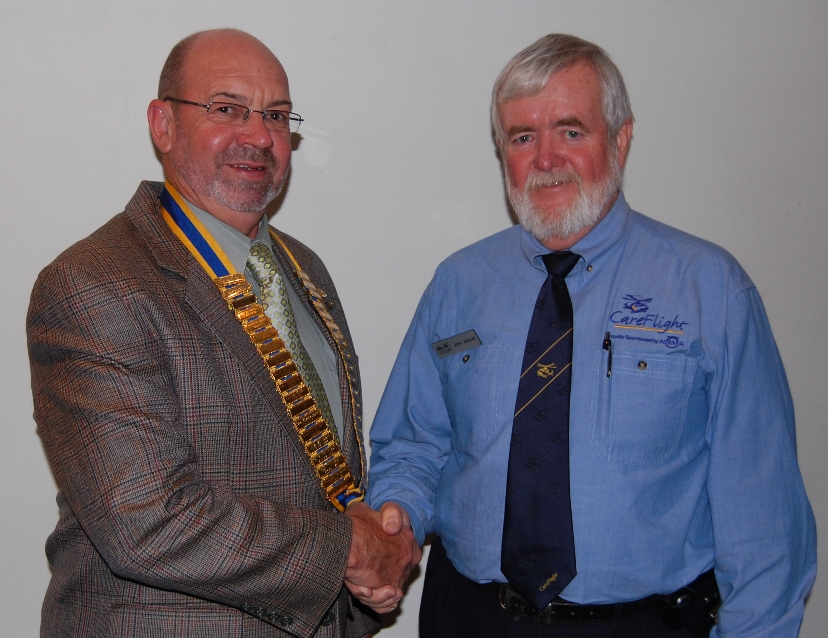Wednesday 8 October 2008
Our guest speaker was John Ebbott who is the Community Relations Officer with Careflight. John was introduced by Brian Johnson.
John advised us that Careflight was started in 1986 with the purpose of bringing hospital standard intensive care to the patient at the accident site. Careflight is a registered charity. Careflight has three main functions which are:
- medical transport
- rescue
- retrieval.The NSW Ambulance Service put the provision of helicopter services out for tender two years ago and Careflight’s tender was unsuccessful. However Careflight was granted the contract to provide the required doctors.
Careflight does maintain a fleet of helicopters and fixed wing aircraft. The best helicopter it has is the “Augusta” which is faster to warm up, flies more quickly and the rotors stop more quickly than the other helicopters. This helicopter is used for rapid response call outs to major paediatric trauma cases or head injury cases. Head injury cases require rapid treatment as brain swelling may result in loss of oxygen to the brain which can cause secondary problems. There are usually four people on board – a pilot, a crewman, a doctor and a paramedic. They aim to stabilise the patient and then transport the patient to hospital as quickly as possible.
Careflight has been responsible for two major innovations. The first is the “Stretcher Bridge” which allows continuous treatment and monitoring of a patient from the accident site to the hospital. It is now in use around the world. The second is the “Retrieval Pack” which contains all the tools and other items a rescuer may need. It can be carried by one person.
Careflight also does international medical retrievals for insurance companies and for the defence forces. If a tourist is injured overseas he or she is often flown back to Australia as the required care may not be available in the other country and people usually recover faster if they are near their family and friends.
John advised us that most of the seventy doctors involved with the service are in the final years of their specialist training. Careflight is the only accredited nonhospital body in which they can carry out their training. These doctors are used to treating patients in a sterile hospital setting and considerable adjustment is required for Careflight’s roadside patients. Initial training of these doctors is carried out using life-like mannequins which cost $50,000 each. If the mannequin stops moaning it can be a good thing or a bad thing. Part of the training involves treating patients in confined spaces simulating car or train crashes.
Another important function of Careflight is to maintain a “Medical Disaster Cache” of drugs, medical machinery and other items for use in field hospitals in the event of a large scale disaster at home or overseas.
Careflight also conducts search and rescue missions. John advised us that night-vision goggles are about to be introduced which will have a significant impact as searching at night time will become a viable option.
John advised us that the average cost of a mission is $5,500. This cost is partially covered by sponsors such as NRMA and the Motor Accidents Authority and partially from income from contracts with government departments and other bodies. Another source of income is from the sale of “Careflight Bears”. Careflight is also dependent upon support from community events and donations.
John was thanked by Bradley Ayres.
